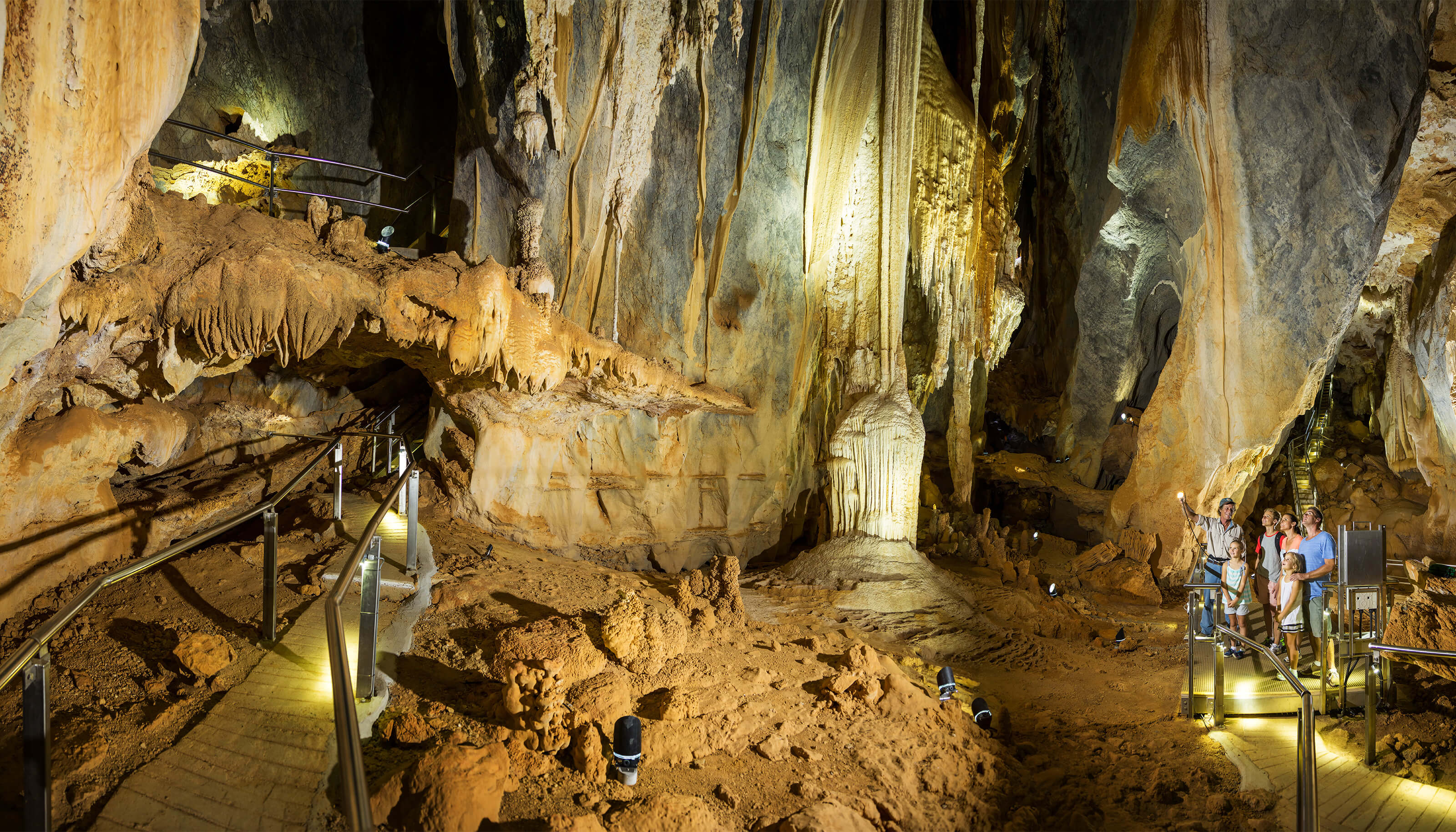Ancient caves in the outback
A coral reef 200km inland? It sounds unlikely but millions of years ago, when the Atherton Tablelands were covered by an ancient ocean, the Chillagoe Caves were actually a vast reef system. Time has transformed that reef into a limestone formation featuring more than 700 caves, some of which stretch for more than 10km.
Each of the caves has its own attractions, from caverns filled with glittering stalactites and stalagmites to caves that have formed their own ecosystem. Tiny bats make their home here, as do spotted pythons, which hunt the bats by sensing their body heat. Local Indigenous people also used the caves for more than 35,000 years; some caves still containing chipping rocks, quartz knives and cave paintings.
The best way to explore them is on a guided tour. Don’t miss the 90-minute tour of the Royal Arch Cave, with its 11 separate chambers. This is a relatively easy cave to explore, and hand-held lamps are supplied. If you prefer a spot of solo exploration, other caves are open to self-guided explorers but you will need to bring your own torch. Try The Archways, where the walls are lined with maidenhair ferns, or Pompeii Cave, where rock wallabies can often be seen.
Chillagoe might be famous for its intricate system of caves but during the turn of the 20th century, this small country town was well known as one of the busiest mining hubs in North Queensland. Copper, silver, lead, and gold were once mined here and remnants of the mining process can be explored on self-guided tours of the remains of historic smelters, treatment plants and slag heaps.

Balancing Rock is a spectacular rock formation at Chillagoe-Mungana Caves National Park
Balancing Rock is a spectacular rock formation at Chillagoe-Mungana Caves National Park

Embark on a guided tour of the Royal Arch Caves
Embark on a guided tour of the Royal Arch Caves

Explore the historic smelters in Chillagoe on a self-guided tour
Explore the historic smelters in Chillagoe on a self-guided tour







